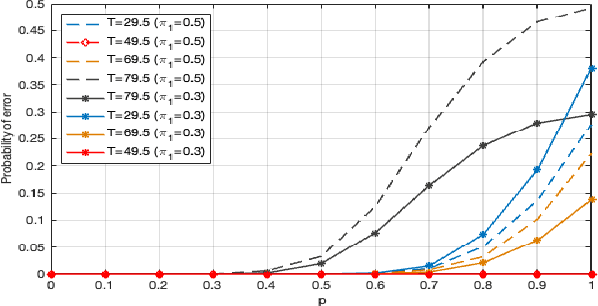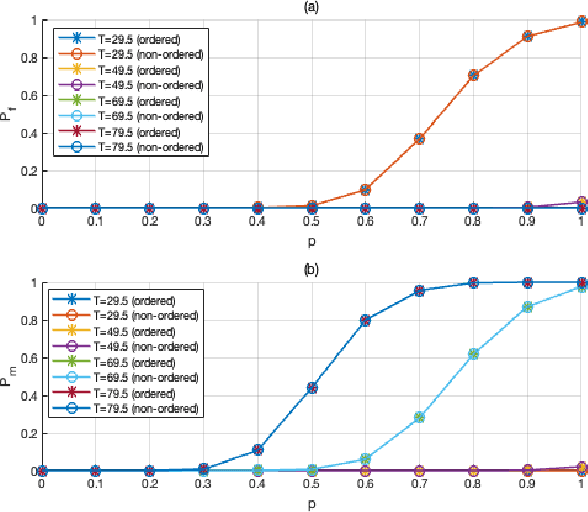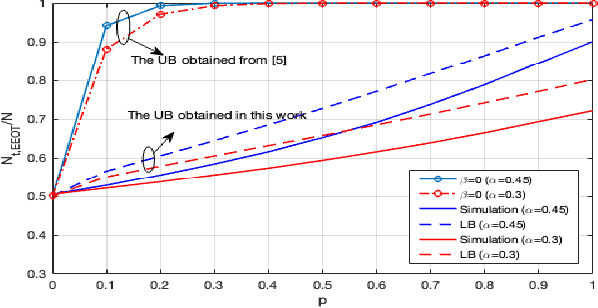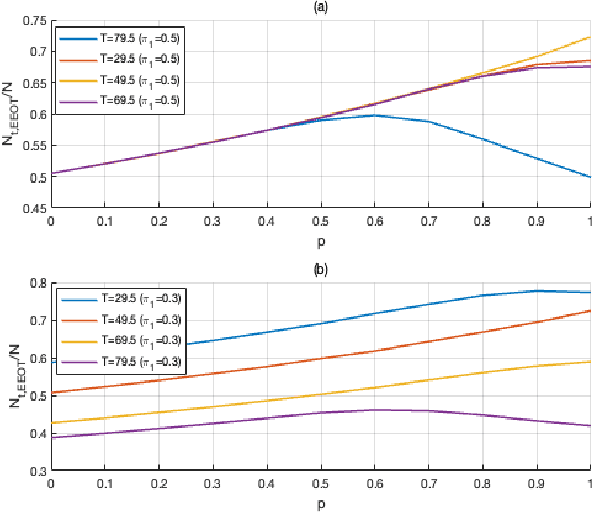Haodong Yang
Transmitter Subspace-Aware Target Detection in Two-Channel Passive Radars with Inter-Receiver Collaboration
Sep 16, 2025Abstract:We address target detection in a single Delay-Doppler cell using spatially distributed two-channel passive radars. An unknown illuminator of opportunity (IO) is assumed to emit a waveform lying in a known low-dimensional subspace (e.g., OFDM). Each receiver transforms its reference and surveillance signals onto the IO subspace after noise-whitening, to obtain cross-correlation (CC) measurements. To save bandwidth, receivers collaboratively exchange and linearly combine the CC output, and only a subset transmits them to a fusion center (FC) over a multiple-access channel (MAC). Collaboration weights are designed using the moments of the FC measurement to enhance detection performance.
SRLoRA: Subspace Recomposition in Low-Rank Adaptation via Importance-Based Fusion and Reinitialization
May 18, 2025Abstract:Low-Rank Adaptation (LoRA) is a widely adopted parameter-efficient fine-tuning (PEFT) method that injects two trainable low-rank matrices (A and B) into frozen pretrained models. While efficient, LoRA constrains updates to a fixed low-rank subspace (Delta W = BA), which can limit representational capacity and hinder downstream performance. We introduce Subspace Recomposition in Low-Rank Adaptation (SRLoRA) via importance-based fusion and reinitialization, a novel approach that enhances LoRA's expressiveness without compromising its lightweight structure. SRLoRA assigns importance scores to each LoRA pair (a column of B and the corresponding row of A), and dynamically recomposes the subspace during training. Less important pairs are fused into the frozen backbone, freeing capacity to reinitialize new pairs along unused principal directions derived from the pretrained weight's singular value decomposition. This mechanism enables continual subspace refreshment and richer adaptation over time, without increasing the number of trainable parameters. We evaluate SRLoRA on both language and vision tasks, including the GLUE benchmark and various image classification datasets. SRLoRA consistently achieves faster convergence and improved accuracy over standard LoRA, demonstrating its generality, efficiency, and potential for broader PEFT applications.
$\mathbfΦ$-GAN: Physics-Inspired GAN for Generating SAR Images Under Limited Data
Mar 04, 2025Abstract:Approaches for improving generative adversarial networks (GANs) training under a few samples have been explored for natural images. However, these methods have limited effectiveness for synthetic aperture radar (SAR) images, as they do not account for the unique electromagnetic scattering properties of SAR. To remedy this, we propose a physics-inspired regularization method dubbed $\Phi$-GAN, which incorporates the ideal point scattering center (PSC) model of SAR with two physical consistency losses. The PSC model approximates SAR targets using physical parameters, ensuring that $\Phi$-GAN generates SAR images consistent with real physical properties while preventing discriminator overfitting by focusing on PSC-based decision cues. To embed the PSC model into GANs for end-to-end training, we introduce a physics-inspired neural module capable of estimating the physical parameters of SAR targets efficiently. This module retains the interpretability of the physical model and can be trained with limited data. We propose two physical loss functions: one for the generator, guiding it to produce SAR images with physical parameters consistent with real ones, and one for the discriminator, enhancing its robustness by basing decisions on PSC attributes. We evaluate $\Phi$-GAN across several conditional GAN (cGAN) models, demonstrating state-of-the-art performance in data-scarce scenarios on three SAR image datasets.
LU2Net: A Lightweight Network for Real-time Underwater Image Enhancement
Jun 21, 2024



Abstract:Computer vision techniques have empowered underwater robots to effectively undertake a multitude of tasks, including object tracking and path planning. However, underwater optical factors like light refraction and absorption present challenges to underwater vision, which cause degradation of underwater images. A variety of underwater image enhancement methods have been proposed to improve the effectiveness of underwater vision perception. Nevertheless, for real-time vision tasks on underwater robots, it is necessary to overcome the challenges associated with algorithmic efficiency and real-time capabilities. In this paper, we introduce Lightweight Underwater Unet (LU2Net), a novel U-shape network designed specifically for real-time enhancement of underwater images. The proposed model incorporates axial depthwise convolution and the channel attention module, enabling it to significantly reduce computational demands and model parameters, thereby improving processing speed. The extensive experiments conducted on the dataset and real-world underwater robots demonstrate the exceptional performance and speed of proposed model. It is capable of providing well-enhanced underwater images at a speed 8 times faster than the current state-of-the-art underwater image enhancement method. Moreover, LU2Net is able to handle real-time underwater video enhancement.
Interpretable attributed scattering center extracted via deep unfolding
May 15, 2024



Abstract:Most existing sparse representation-based approaches for attributed scattering center (ASC) extraction adopt traditional iterative optimization algorithms, which suffer from lengthy computation times and limited precision. This paper presents a solution by introducing an interpretable network that can effectively and rapidly extract ASC via deep unfolding. Initially, we create a dictionary containing reliable prior knowledge and apply it to the iterative shrinkage-thresholding algorithm (ISTA). Then, we unfold ISTA into a neural network, employing it to autonomously and precisely optimize the hyperparameters. The interpretability of physics is retained by applying a dictionary with physical meaning. The experiments are conducted on multiple test sets with diverse data distributions and demonstrate the superior performance and generalizability of our method.
Efficient Ordered-Transmission Based Distributed Detection under Data Falsification Attacks
Jul 18, 2022



Abstract:In distributed detection systems, energy-efficient ordered transmission (EEOT) schemes are able to reduce the number of transmissions required to make a final decision. In this work, we investigate the effect of data falsification attacks on the performance of EEOT-based systems. We derive the probability of error for an EEOT-based system under attack and find an upper bound (UB) on the expected number of transmissions required to make the final decision. Moreover, we tighten this UB by solving an optimization problem via integer programming (IP). We also obtain the FC's optimal threshold which guarantees the optimal detection performance of the EEOT-based system. Numerical and simulation results indicate that it is possible to reduce transmissions while still ensuring the quality of the decision with an appropriately designed threshold.
 Add to Chrome
Add to Chrome Add to Firefox
Add to Firefox Add to Edge
Add to Edge